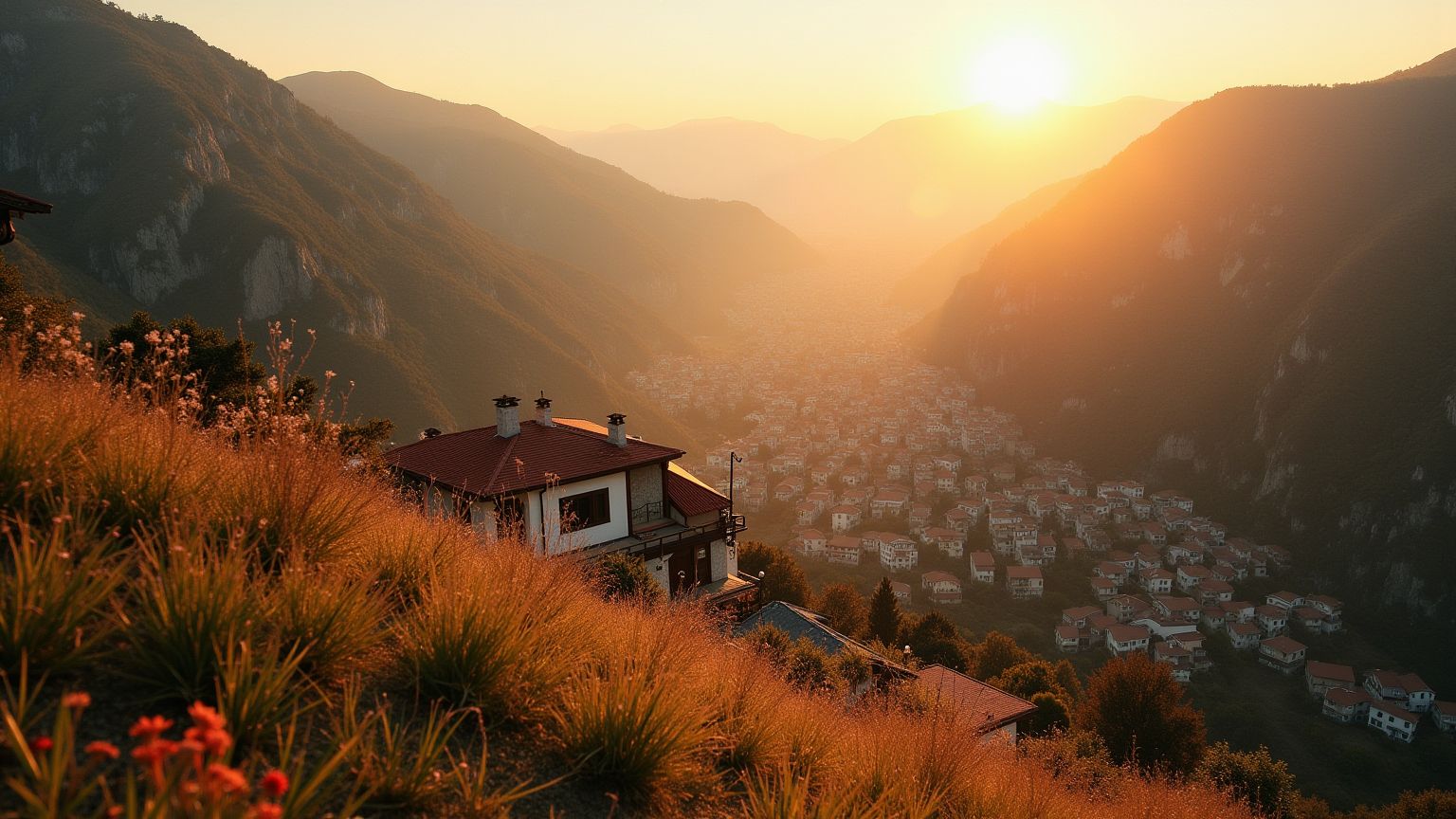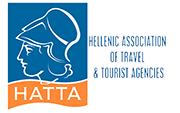Kalavryta: A Hidden Gem in the Mountains of Greece
I've spent the last twenty-something years guiding folks through the jaw-dropping scenery and historic spots around Kalavryta, and let me tell you—this pocket of Greece gets under your skin. Tucked away in Achaea's mountains in the northern Peloponnese, Kalavryta isn't just some dot on a map. It's a full-blown experience that blends knock-your-socks-off natural beauty with gut-wrenching history and the kind of authentic Greek culture you won't find where the cruise ships dock.
The Historical Significance of Kalavryta

When I walk people through Kalavryta, I feel this weight on my shoulders—a responsibility to tell both the triumphant and heartbreaking chapters of our story.
The Greek War of Independence
Our historical journey kicks off at the Agia Lavra Monastery, just a stone's throw (5km) from town. Right here—on this very spot—Bishop Germanos raised the revolution flag on March 25, 1821, basically lighting the fuse on Greece's War of Independence against the Ottomans. The monastery itself has been around since 961 AD, though what you see today was rebuilt in 1689 after being knocked down more times than a carnival game.
When you wander through, you can actually see THE flag from that day—the real deal—along with religious treasures and historical bits and bobs. Standing there, I often ask visitors to close their eyes and imagine the sheer guts it took to say "enough" after four centuries under Ottoman rule.
The Kalavryta Holocaust
The darkest chapter in Kalavryta's story unfolded during WWII. On December 13, 1943, Nazi forces committed an act so brutal it still leaves a lump in locals' throats. They rounded up every male over 14, marched them to a hillside above town, and executed nearly 700 men and boys. Then they torched Kalavryta, leaving almost nothing standing.
Today, the Holocaust Museum occupies the old school where they held the women and children during this nightmare. Inside, you'll find personal belongings—a pocket watch that stopped ticking, a pair of glasses never reclaimed—alongside photographs and documents that piece together that horrific day. The town clock remains frozen at 2:34 p.m., when the killing began.
Having heard survivors describe what happened—their voices cracking even decades later—I can tell you that walking through this museum hits differently than reading about it in a history book. It's a punch to the gut, but an essential reminder of humanity's capacity for both unspeakable cruelty and astonishing resilience.
Getting to Kalavryta
Folks always ask me the best way to reach our mountain hideaway. You've got options, and honestly, the journey to Kalavryta is part of the experience:
By Car
From Athens, you're looking at roughly 2.5-3 hours of driving (about 200km). You'll cruise the Athens-Corinth National Road, follow signs toward Patras, then veer off to Diakofto before climbing the mountain road to Kalavryta. Don't rush this drive—the views as you wind through Vouraikos Gorge will have you pulling over every five minutes for photos.
From Patras, it's a quicker jaunt—about 90 minutes (85km). Head east along the Gulf of Corinth coastline to Diakofto, then zigzag up to Kalavryta on roads that seem to have been drawn by a child with a crayon.
By Train - The Odontotos Rack Railway
Here's a hot tip: take the historic Odontotos Rack Railway from Diakofto up to Kalavryta. This isn't just transportation; it's a time machine on tracks. Built between 1889-1896, this narrow-gauge marvel is one of only three rack railways in Greece, climbing from sea level to 720 meters like a mechanical mountain goat.
The 22km journey takes about an hour, squeezing through Vouraikos Gorge where you'll pass over stone bridges that look like they belong in a fairy tale, through tunnels bored by hand, and alongside waterfalls that spray mist on the windows. In some spots, the train clings to the gorge wall with barely inches to spare, offering views you simply can't get any other way.
I've taken this ride dozens of times, and I still press my nose against the window like a kid at a candy store. There's something magical about the clickety-clack rhythm as you climb from coastal scrub through pine forests to alpine meadows.
Trains run 3-5 times daily depending on season, but don't just show up hoping for the best. Check the schedule and book ahead, especially if you're visiting during ski season or summer weekends when half of Athens seems to have the same idea.
By Bus
KTEL buses connect Kalavryta with Athens (3.5 hours) and Patras (2 hours). They're comfy enough and won't break the bank, making this a solid choice if you're watching your euros or prefer to let someone else handle the mountain roads.
When to Visit Kalavryta
Kalavryta wears a different outfit for each season, and they all look good on her:
Winter (December-March)
Winter transforms Kalavryta into a buzzing ski resort. The Ski Center on Mount Helmos offers 12 slopes for everyone from "I've never seen snow before" beginners to "watch me fly off this ridge" daredevils. The town itself glows with twinkling lights, and the tavernas serve the kind of stick-to-your-ribs mountain food that makes you forget all about beach season.
Even if skiing sounds like a fancy way to break your leg, the snow-draped landscape is worth bundling up for. Just check road conditions—sometimes Mother Nature decides the mountain roads need a snow day.
Spring (April-June)
Spring might just be Kalavryta's secret season. The mountains explode with wildflowers—carpets of purple, yellow, and red that look like someone went crazy with nature's paintbox. The weather hits that sweet spot where you need just a light jacket, perfect for hiking without summer's crowds or winter's chill.
This is also when Greeks celebrate Orthodox Easter (usually on a different date than Western Easter). If you're lucky enough to be here then, you'll witness processions by candlelight, midnight fireworks, and enough roast lamb to feed a small army.
Summer (July-September)
While tourists pack the islands like sardines, Kalavryta keeps its cool—literally. The elevation means pleasant temperatures when coastal Greece is sizzling like a souvlaki grill. Days are perfect for hiking, mountain biking, or simply claiming a chair in the town square under the plane trees, where you can sip a freddo espresso slowly enough to make it an Olympic sport.
Summer evenings often feature impromptu music in the square—old men with weathered hands coaxing haunting melodies from bouzoukis while locals break into traditional dances that have been passed down for generations.
Autumn (October-November)
Fall paints Kalavryta and its surrounding mountains in shades that would make an artist weep. The forests turn golden, amber, and fiery red, creating scenes worthy of calendar photos. The weather stays mild enough for outdoor adventures, and the town settles into a peaceful rhythm after summer visitors head home.
It's harvest season too—locals gather walnuts by beating tree branches with long sticks, collect chestnuts from the forest floor, and hunt for wild mushrooms that will end up on restaurant plates by evening. If you see "μανιτάρια του βουνού" (mountain mushrooms) on a menu, order them immediately—your taste buds will write you thank-you notes.
Must-See Attractions in Kalavryta
After showing thousands of visitors around, I've got a good handle on the spots that make people's jaws drop:
The Cave of the Lakes (Spilaio ton Limnon)
About 17km from Kalavryta sits a geological wonder that looks like something dreamed up for a fantasy movie. This cave features a series of 13 cascading underground lakes spread across three levels. The cave stretches about 2km, though visitors can only access about 500m via a well-built walkway.
What makes this place knock your socks off is the formation—natural stone dams create small lakes that spill one into another like a subterranean water feature designed by Mother Nature after a creative burst. In winter and spring, the lower level fills completely, creating more impressive lakes, while summer and autumn reveal more of the stone formations that look like frozen waterfalls.
The guided tour takes about 30 minutes. Bring a light jacket (it's a constant 16°C/60°F year-round) and proper shoes—this isn't the place for your fancy flip-flops.
Mount Helmos and the Aristarchos Telescope
Mount Helmos (locally called Aroania) tops out at 2,355 meters and delivers the kind of panoramic views that make smartphone cameras feel inadequate. Beyond the ski center, the mountain houses the Aristarchos Telescope—the biggest in Greece and the Balkans. Sitting at 2,340 meters, the observatory sometimes opens for public stargazing. Check with the tourist office for dates, because peering through this beast of a telescope at Jupiter's moons will ruin your smartphone's night mode forever.
The whole area is a Natura 2000 protected site thanks to its ridiculous biodiversity. Keep your eyes peeled for the Kalavryta butterfly—a little fluttering miracle found nowhere else on Earth.
The Municipal Museum of the Kalavryta Holocaust
I've mentioned this place already, but it deserves another spotlight. Beyond being a historical monument, it's a soul-stirring experience that stays with visitors long after they've left Kalavryta. Renovated in 2005, the museum now includes multimedia presentations that provide context for the massacre and its aftermath.
What hits hardest aren't the grand historical narratives but the small personal items—a child's toy, a wedding photo, everyday objects frozen in time on December 13, 1943. It's history made painfully human.
The Monastery of Mega Spilaio
About 10km from Kalavryta, the Mega Spilaio (Great Cave) Monastery seems to defy gravity, built into the face of a 120-meter rocky cliff like some medieval architect was showing off. Founded in the 4th century AD, it's among Greece's oldest monasteries and houses a wax icon of the Virgin Mary supposedly created by St. Luke himself.
The eight-story building appears to grow straight out of the rock—honestly, it looks like something from Game of Thrones. Inside, you'll find religious artifacts, ancient manuscripts, and historical treasures that somehow survived numerous fires and destructions over the centuries. The monks are usually happy to chat, offering insights you won't find in guidebooks.
Planitero Springs
For a perfect lazy afternoon, I often take visitors to the tiny village of Planitero, about 8km from Kalavryta. Here, ice-cold springs bubble up to form crystal-clear ponds beneath massive plane trees that have watched over this spot for centuries.
Several tavernas have built wooden decks extending over these ponds, letting you dangle your feet near the water while devouring traditional Greek dishes. The local trout is ridiculously good—often caught from the very waters you're sitting above. Paired with a crisp local wine and the sound of water burbling over rocks, it's the kind of simple perfection that vacation memories are made of.
Local Cuisine and Where to Eat
Greek food varies wildly by region, and Kalavryta's mountain cuisine is a whole different animal from what you'll find in Mykonos or Santorini. Having eaten my way through basically every kitchen in town (occupational hazard), here's what shouldn't miss:
What to Try
• Mountain Lamb or Goat: Slow-roasted until it falls off the bone, seasoned with mountain herbs the animals themselves snacked on while alive. The flavor is so intense it'll make you question every lamb dish you've had before.
• Feta me Meli: Local sheep's milk feta wrapped in crispy phyllo, baked golden brown, then drizzled with mountain honey and sprinkled with toasted sesame seeds. The hot-cold, sweet-salty combination is basically edible poetry.
• Wild Mushrooms: In autumn, look for dishes featuring porcini, chanterelles and other fungi foraged from the surrounding forests. Usually simply prepared with olive oil, garlic, and herbs to let their woodsy flavor shine.
• Hylopites: Hand-cut pasta often served with chunks of aged myzithra cheese or a rich meat sauce. The pasta's slightly irregular shape tells you it was made by someone's yiayia (grandmother), not a machine.
• Trahanas Soup: A warming concoction made from fermented milk and grain that shepherds have been eating for centuries. Perfect after a day in the snow, it's the Greek mountain version of chicken soup for the soul.
• Karydopita: A sinfully good walnut cake soaked in cinnamon-spiced honey syrup. Dense, moist, and gone before you know it.
Where to Eat
• To Spiti tis Marias (Maria's House): A family-run taverna where Maria still makes phyllo by hand, stretching it tissue-thin across a table bigger than most people's living rooms. Her cheese pies are legendary, and the outdoor terrace offers views that make the food taste even better somehow.
• Taverna Styga: Named after the mythical river Styx that flows nearby, this joint specializes in meat dishes slow-cooked over wood fire. The owner, Yannis, raises his own sheep and will tell you the life story of your dinner if you ask (maybe don't if you're sensitive).
• To Hani: Smack in the central square, this is where locals gather when they want to see and be seen. Their breakfast spread of homemade yogurt with local honey and walnuts will spoil you for all other breakfasts.
• Spondi: If you're craving something more refined, this place offers creative takes on traditional dishes. The chef trained in Athens but returned to his hometown to showcase local ingredients with modern techniques. Try his deconstructed moussaka—it sounds pretentious but tastes like a miracle.
Where to Stay
Kalavryta's accommodations range from simple family-run guesthouses to boutique hotels that would make design magazines drool. Based on years of visitor feedback:
• Kalavryta Canyon Hotel & Spa: The fanciest option, featuring a spa where treatments incorporate local herbs, honey, and mountain spring water. The fireside lounge with panoramic windows is worth the splurge alone.
• Villa Oneiro: A gorgeous small hotel with balconies perfectly positioned for sunset mountain views. The owners, Dimitris and Elena, treat guests like long-lost relatives—expect homemade treats left in your room and insider tips on where locals eat.
• Archontiko Zafeiropoulou: A lovingly restored mansion that lets you experience traditional architecture without sacrificing modern comforts like heating (crucial in winter) and decent showers. The breakfast spread features so many homemade preserves you'll need a strategy to try them all.
• To Spiti sto Livadi: For families or groups, these standalone cottages outside town offer space to spread out and private gardens where kids can burn off energy. Each has a fully equipped kitchen, though the nearby taverna's food will probably make you question why you'd ever cook.
Off the Beaten Path: My Personal Favorites
After showing the postcard sites to thousands of visitors, I've developed a soft spot for Kalavryta's lesser-known corners. These spots might not make the brochures, but they offer something more authentic:
The Ancient Path to Mega Spilaio
While tour buses zip up to Mega Spilaio monastery on the modern road, there's an ancient footpath that follows the original pilgrimage route. The 5km trail starts near Vouraikos Gorge and climbs gradually through forests and meadows offering knockout views. Along the way, you'll pass tiny chapels where pilgrims have stopped to light candles for centuries.
The trail isn't perfectly marked, but that's part of its charm—you're walking in footsteps that go back a thousand years. Pack water and sturdy shoes, and give yourself plenty of time to stop and soak in the silence that seems to have its own presence here.
The Village of Souvardo
This tiny hamlet, just 7km from Kalavryta, feels like time forgot to visit. With fewer than 50 year-round residents (most with more wrinkles than a linen shirt), it offers a glimpse into mountain life that's vanishing faster than snow in May.
The village square has exactly one café where old men with mustaches that deserve their own zip code play never-ending backgammon games. The surrounding stone houses feature traditional architecture with wooden balconies, carved doors, and slate roofs. There's precisely nothing "to








